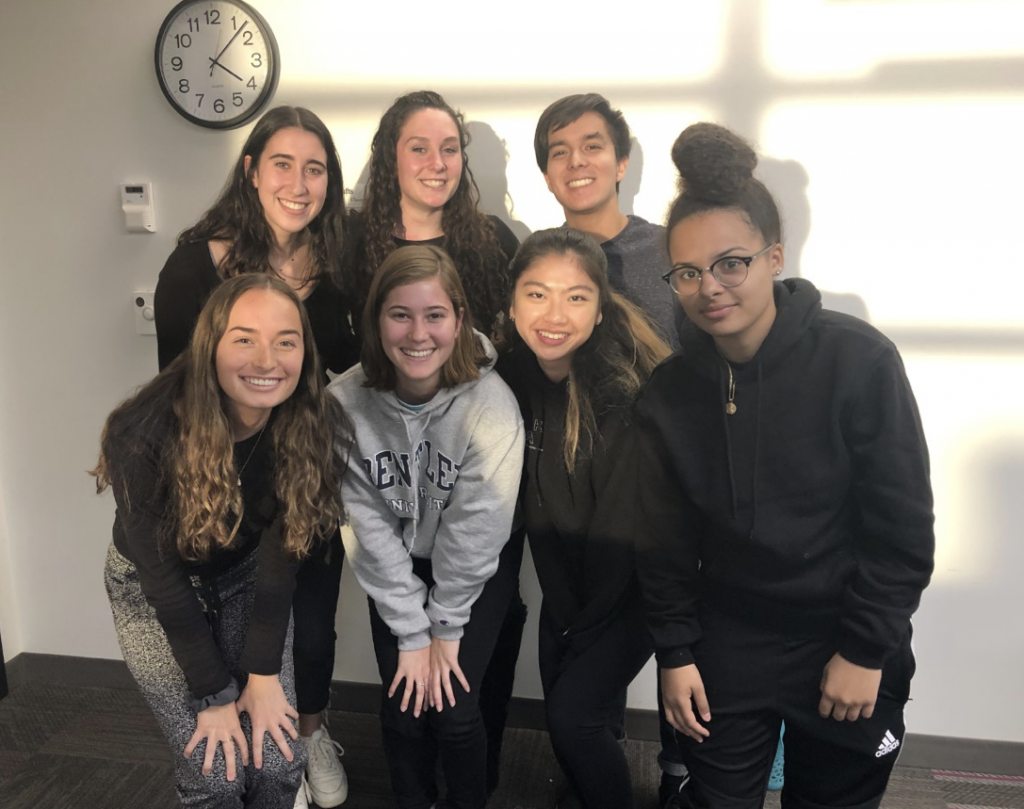By Lily McIntyre, Lisvette Batista, Julian Balkcom, Ilona Eaton, Lily Kurtz, Michelle Liu, Lily McIntyre, and Olivia Smith
Approximately 8,986 children and adolescents died from opioid overdoses from 1999 to 2016, and these numbers are growing (Devitt). Opioid strength has increased immensely in recent years in drugs such as codeine and methadone, yet pharmacies still sell these opioids without visibly displaying child-safe cabinet locks. Well-known pharmacies like CVS and Rite-Aid take a controversial stance against tobacco products by not selling them, yet these same pharmacies won’t stand for the safety of young children by visibly selling these locks.
More and more children accidentally ingest medication partly because prescription bottles are “child-resistant,” which means that “the packaging meets a standard that requires it to be significantly difficult for children under five years of age to open within a reasonable time, and not difficult for normal adults to use properly” (Safe Kids Worldwide). However, resistant packaging is insufficient, as a recent study found that children aged three to five could open child-resistant bottles in seconds (Safe Kids Worldwide). According to the Consumer Product Safety Commission guidelines, a package is deemed “child-resistant” as long as 80% of children are unable to open the package in 5 minutes (Fitzwater). Therefore, a package labeled “child-resistant” can still be opened by about 20% of children.
In addition to the ineffectiveness of child-resistant bottles, parents are not implementing safe storage practices. In a study conducted with 681 households, in which a guardian using prescription opioids lived with children under seven, only 32.6% of adults self-reported using safe storage practices (McDonald et al). Some parents falsely assume that their young children know to stay away from prescription medicine; as a result, one third of parents believe that safely storing their drugs does not matter as long as their children are supervised (Safe Kids Worldwide). Cabinet locks provide a much safer solution: they require a lock combination or a key to open, making it more difficult for a child to access prescriptions.
How can parents lock up opioids when there are no drawer locks being openly sold at the counter of pharmacies? Massachusetts state law requires pharmacies to display a sign near the counter telling customers that locks are sold; however, the signs only need to be four by five inches in size (Massachusetts). Because of the signs’ diminutive size, individuals are virtually unaware that these locks are available in their local pharmacies.
Pharmacies must offer simple safety options for parents, guardians, and all prescription users, especially given that prior testing has proven that “child-resistant” bottles are not effective enough to keep children safe from accidental ingestion. Moving forward, pharmacies must sell child safety locks at a visible location at the counter. While education about safe storage of opioids is important, it is insufficient without making these locks accessible to the public. Pharmacies can take simple measures to save many innocent children. The time for pharmacies to mitigate their effects of the opioid crisis is long overdue. Our children’s lives are at stake.
References
Devitt, Michael. “New Research Finds Rise in Pediatric Deaths From Opioids.” American Academy of Family Physicians. 18 Jan. 2019, https://www.aafp.org/news/health-of-the-public/20190118pedopioids.html
Fitzwater, Travis. “Child-Resistant Is Not Child-Proof.” The Missouri Pharmacy Blog, 14 Oct. 2009, http://www.thepharmacyblog.com/child-resistant-is-not-child-proof/.
“Massachusetts Legislature Homepage.” The 191st General Court of the Commonwealth of Massachusetts, malegislature.gov/. https://malegislature.gov/Laws/GeneralLaws/PartI/TitleXV/Chapter94C/Section21B
Safe Kids Worldwide. “Safe Medicine Storage: Recent Trends and Insights for Families and Health Educators.” 2018. PDF File. https://www.safekids.org/sites/default/files/safe_medicine_storage-march_2018.pdf
U.S. Department of Health and Human Services Center for Disease Control and Prevention. Pharmacists: On The Front Lines. https://www.cdc.gov/drugoverdose/pdf/pharmacists_brochure-a.pdf


 ABOUT
ABOUT